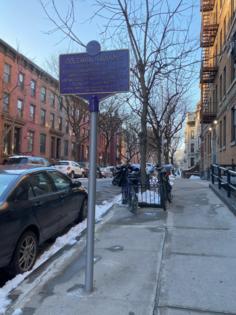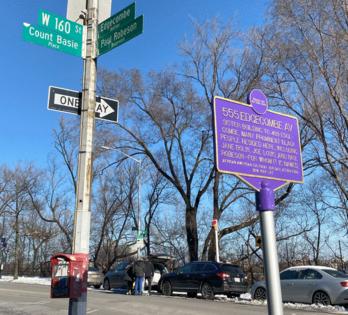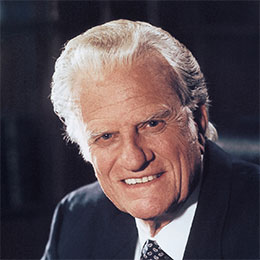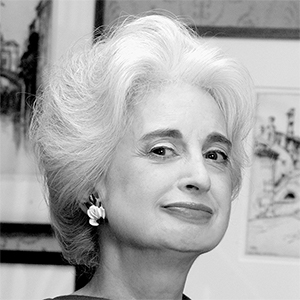'Signs of the Times' markers map out Harlem's rich Black history
Published in Lifestyles
NEW YORK — Outside the Washington Heights branch of the New York Public Library in Manhattan stands a metal post topped with an unassuming blue plaque bearing golden letters — an easily overlooked marker that’s actually a window into Harlem’s storied past.
Bearing the name Regina Anderson Andrews, it memorializes the librarian, playwright and community activist who was influential in the Harlem Renaissance of the 20th century. As the first Black woman to head a New York City branch of the New York Public Library, Andrews took the library concept beyond books to encompass community engagement, cultural cultivation and learning and overcame decades of discrimination to do so.
That and two dozen other signs throughout Harlem comprise “Signs of the Times,” a project conceived by Karen D. Taylor, founder and executive director of While We Are Still Here, a nonprofit organization dedicated to preserving the neighborhood’s narrative. The markers stand testament to a history that is fast being overtaken by gentrification, Taylor indicated in an interview to the Daily News.
“Old Harlem is disappearing,” Taylor said. “That’s why While We Are Still Here is a really needed entity right now, just to codify as much of the history as we possibly can.”
The 25 signs arrayed around Harlem from West 110th Street to West 163rd Street memorialize the people, organizations, buildings and sites that form the rich history of the neighborhood once known worldwide as a hub and incubator of Black artistry and culture.
Taylor first conceived of the signs in 2020. With help from the African-American Cultural Heritage Action Fund and several other arts and humanities groups, the first sign was installed in 2023. The final ones should be in place by the end of 2025. A couple are pending due to nearby construction.
There are plaques bearing household names such as civil rights activist Malcolm X, and Nelson Mandela, who received a “statesman’s welcome” at Adam Clayton Powell Boulevard and West 125th Street in 1990 after being released from prison in South Africa, according to his inscription. There are nods to the Cotton Club, the indispensable Green Book safe-travel guide, and two landmark Edgecombe Avenue apartment buildings once home to African American luminaries including Paul Robeson, Thurgood Marshall and W.E.B. Du Bois.
There’s one for Dorothy Maynor outside the Harlem School of the Arts, which she founded back in 1964. Under her stewardship, it nurtured the artistry of thousands of students, a mission it continues to this day.
Ethel Waters, the actress and singer who broke Broadway barriers to integrate the theater, was also the first African American to have both her own variety show and television series—“The Ethel Waters Show” and “Beulah,” respectively — and the first to be nominated for a Primetime Emmy.
Andrews started as a librarian at NYPL’s 135th Street branch during the Harlem Renaissance and created a place for community gathering, exploration and learning, also carving out space for African American writers to hone their craft in safety and quiet.
The signs were hand-crafted and hand-painted by an Ohio company, with the letters hand-pressed, Taylor said. The markers also form a cornerstone for bringing the history to life in festivals and exhibits, performances and events. In this way, the history of Harlem will always be present, even when its residents are no longer predominantly African American, Taylor said, noting, “There will at least be a visual reminder of what happened here.”
©2025 New York Daily News. Visit at nydailynews.com. Distributed by Tribune Content Agency, LLC.



























Comments